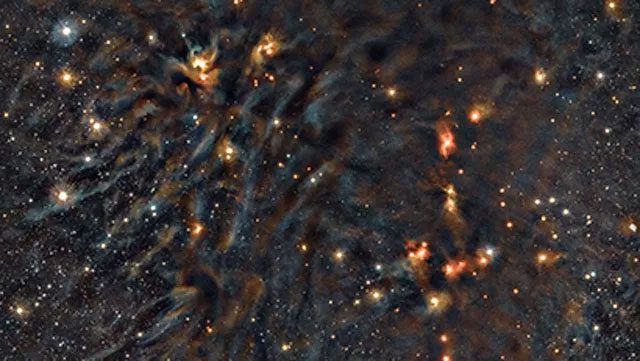A star-forming region near us may explain the planetary seeds once brought to the early Solar System by supernovae, including the seeds of Earth.
According to Space, a new study claims that supernovae—the stars that explode in brilliant death—provided the necessary conditions for building planets in the Solar System.

Star-forming region in the Ophiuchus constellation – (photo: ESO).
The research led by astronomer John Forbes from the Flatiron Institute (USA) observed the star-forming region in the Ophiuchus constellation and found conditions similar to those of our early Solar System.
Scientists traced clues from some of the first solid materials that condensed from the dust cloud surrounding sun-like newborn worlds and discovered an important element: aluminum-26, an isotope produced within stars that has a relatively short lifespan of just 100,000 years.
They found aluminum-26 in calcium-aluminum-rich inclusions known as CAIs, tiny particles measuring less than a millimeter, found in meteorites. CAIs provide a significant heat source during planet formation, drying out worlds, and are considered a type of “planetary seed” essential for any young star system. But where do CAIs come from?
They linked it to an abundant source of aluminum-26: supernovae. Aluminum-26 is one of many metals found in the fiery core when massive stars explode, a phenomenon known as “supernova.” Therefore, according to scientists, this precious pre-planetary material was brought to our Solar System through a series of mysterious supernovae—deaths that brought forth new life.
The study was recently published in the scientific journal Nature.





















































